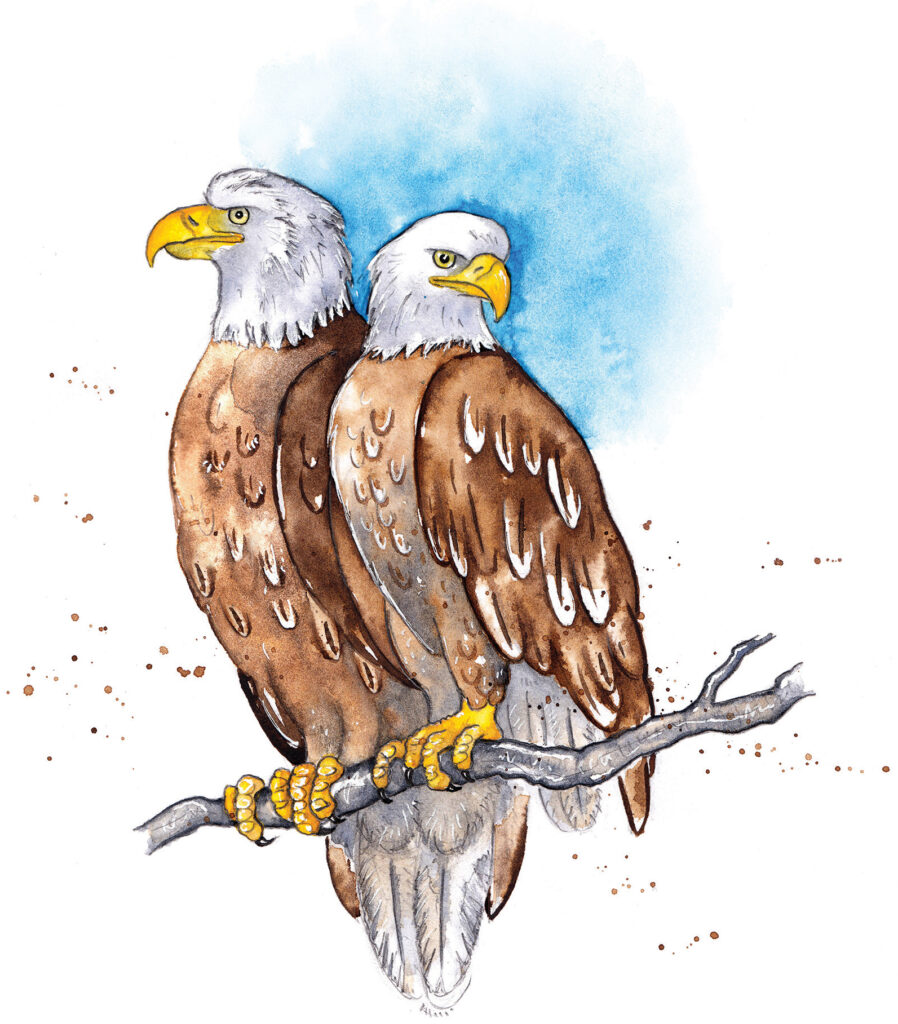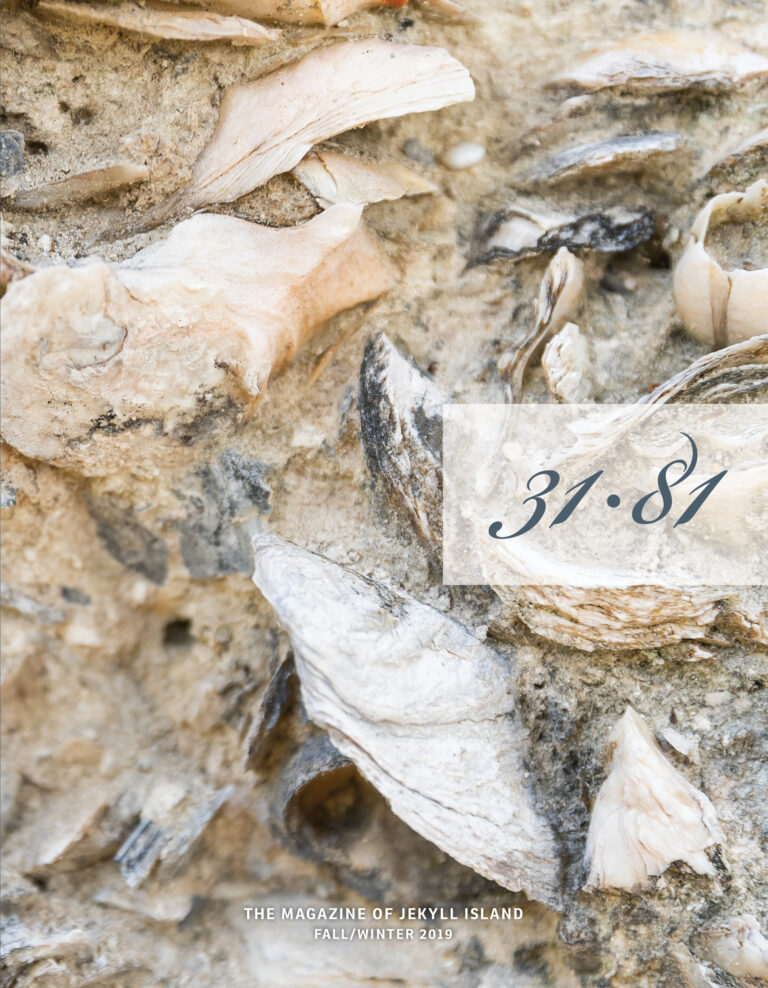By Candice Dyer
Two pairs of the American icons roam the island skies
Bald eagles know how to commit. “They mate for life and remain monogamous,” says Ray Emerson, lead park ranger for the Jekyll Island Authority’s Conservation Department. “They also practice what we call ‘nest fidelity’ in that they return to the same nest year after year, as long as the nest has not been destroyed.”
Jekyll boasts two active pairs of bald eagles, but only one has successfully reared hatchlings, laying eggs at the beginning of December 2018. Bald eagles produce chicks that fledge in about four months.
The eaglets test their wings by flying among the treetops before striking out on their own. These birds of prey—fed on a diet of fish, water birds, and small mammals—settle here from October to May, then ride the thermals to cooler climates. They can boast a wingspan as long as seven-and-a-half feet.

Like humans, these birds age into their snowy pates. “They are mottled for the first three or four years before their heads turn completely white,” Emerson says. Bald eagles in the wild typically live 20-30 years. The oldest bald eagle to have died in the wild at a known age was 38.
The beloved national symbol used to be classified as an endangered species, but it’s making a comeback. “The pesticide DDT was in the bodies of the animals that eagles eat, and it made their eggshells very thin and easy to break,” Emerson says. “Now that DDT has been banned, they’re considered stable and expanding.”
See for Yourself
The island’s rangers offer guided tours, with shared binoculars and a spotting scope, every Saturday from December through January, at 10 a.m. and 3 p.m. Visit jekyllisland.com/rangerwalks for more information.



